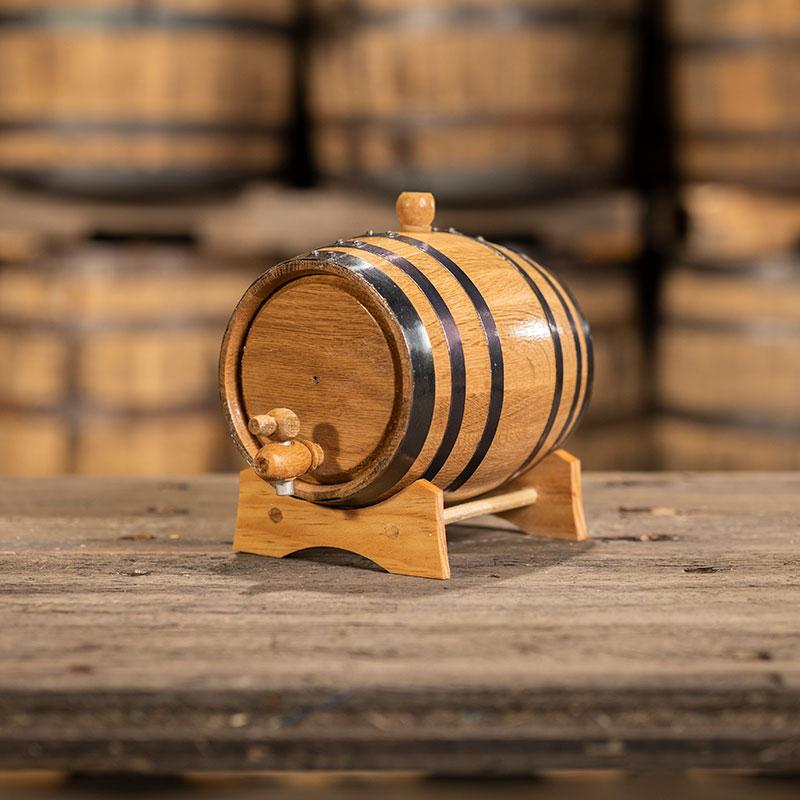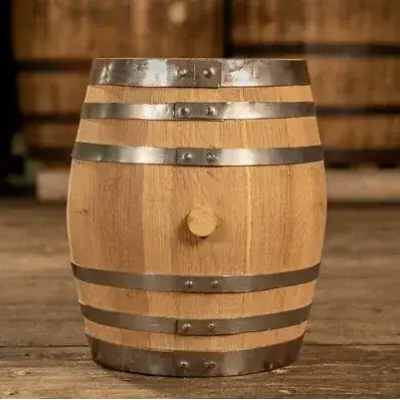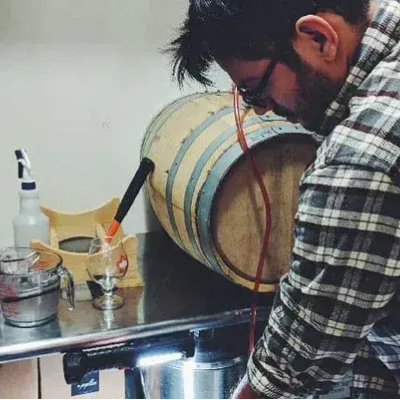Homebrewing
How to store and care for a new small format bourbon barrel
August 2nd, 2021

New, small barrels are a great buy for homebrewers, people who want to experiment with distilled spirits or even bartenders who want to try their hand at barrel-aged cocktails.
However, barrel-aging with a brand new, small barrel isn’t exactly an out-of-the-box, ready-to-go endeavor. It takes some prepwork and some homework. Not only do you have to know what you’re doing when aging with a new small barrel, but you also need to know the best way to store and take care of the barrels.
As far as barrels go, there are a few things you need to know about proper care. New, small barrels have a few additional care needs, too. Follow these tips and you’ll have longer-lasting barrels that make better-tasting beverages and other creative concoctions.
Small barrels come in several different sizes
- 1 Liter
- 2 Liter
- 3 Liter
- 5 Liter
- 10 Liter
- 5 Gallon

Storage tips
Size is definitely one of the advantages of a small barrel, especially when it comes to storage solutions. They take up much less space than a full-size, 53-gallon whiskey barrel or a 60-gallon wine barrel, so they’re ideal for storing both on display or nicely tucked away.
The liter barrels are the perfect size for setting on a kitchen or bar countertop as a display piece. They come with a stand, which adds a nice touch while keeping the barrel from rolling around.
As for the 5 gallon barrel, we recommend storing horizontally with the bung in place and facing up.
Finally, in general, barrels do best when stored in cooler, darker environments. Don’t expose them to too much sunlight or heat. If you’re storing a barrel after it has been used, then you will want to find storing tablets online and follow those instructions to keep the barrel infection-free.

Swell before you fill
Brand new barrels have never stored or aged liquid, which means you need to ensure it is liquid tight before filling with a beer, spirit, cider or other beverage that you want to age. Since these barrels are completely dry, they may have loose bands or could leak from the heads or between staves.
To solve this and get your small barrel ready to age, you need to swell it. Swelling is a process of filling your barrel with water (or sometimes steam) and allowing the wood to soak it up. This makes the barrel much tighter and leak-free.
To swell a brand new, small barrel, you will first want to rinse out the barrel three or four times. This will loosen up any charred wood that may have flaked or peeled off.
After you’ve rinsed the inside, fill the barrel with hot water (we normally recommend about 180º F) and place the bung in the bunghole. Watch for leaks and make sure the barrel stays full of water until any leaking stops.
Now, this is where you may have to practice some patience. The leaking may stop after about an hour, or it could take up to a week. It all depends on specific barrel size and other factors, such as how long it has been in storage.

The first filling
Once you’ve gone through the swelling process, it’s best to fill the barrel with a spirit of lower quality. Why? Because a lot of what first goes in and sits in a barrel is going to get soaked up – even after swelling.
That spirit is also going to help strip the really strong oak flavors and tannic that would otherwise affect the taste of whatever type of beverage you actually want to age.
After your barrel has this first fill under its belt, you’re ready to get barrel-aging.
Clean and repeat
You should be able to continue barrel-aging various beverages for quite a while with your new barrel – as long as you take care of it.
However, the barrel will always take on a bit of the flavor of whatever has been aged in it. So, if you’re looking to change things up and age something completely different from what was aged previously, then you need to clean the barrel.
The recommended cleaning process shared over at Brew Your Own includes first rinsing with cold water, then warm water and a third and final rinse with hot water. You can then use a mild cleaner, BYO suggests sodium carbonate. Don’t use a strong cleaner, as that could alter any flavor the barrel may be able to impart on your beverages.
There are other methods of cleaning barrels, including purchasing a barrel cleaning kit and following those instructions. These kits can be found at several online homebrewing and beer equipment retailers.
It should be noted that cleaning the barrel will eventually work away the char and shorten the lifespan of the barrel. You won’t need to clean as often if you’re aging high-ABV spirits, but cleaning will be absolutely necessary if you’re aging wine, beer or lower (or no) ABV beverages to avoid risk of infection developing in the barrel.

Now it's time to get aging!
Shop all of Small Format Barrels below! We also have a barrel care resource page devoted to new, small format barrels where you can find even more information.

ABOUT THE AUTHOR:










